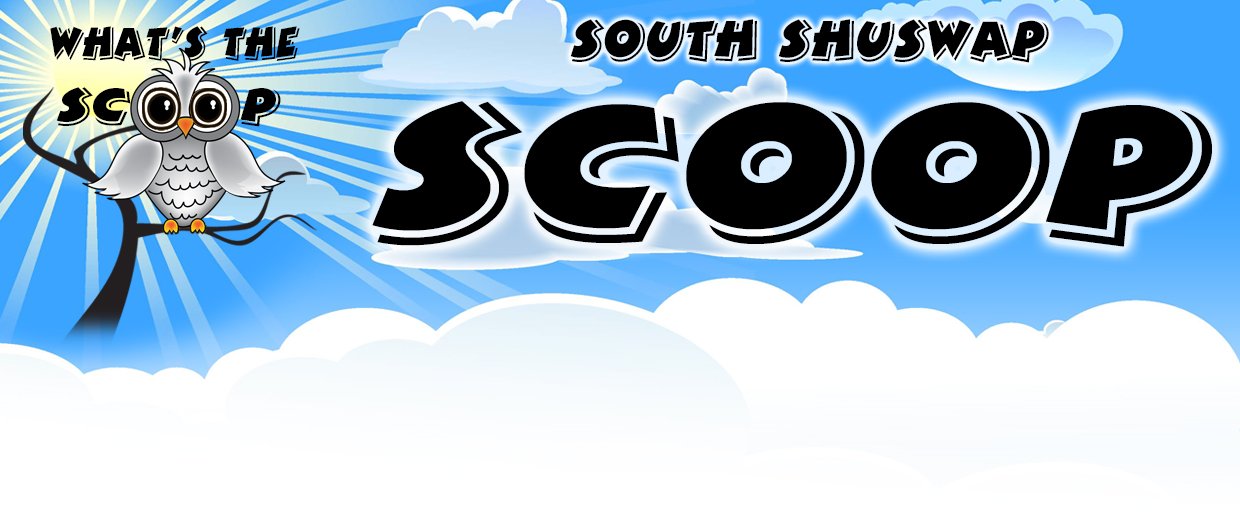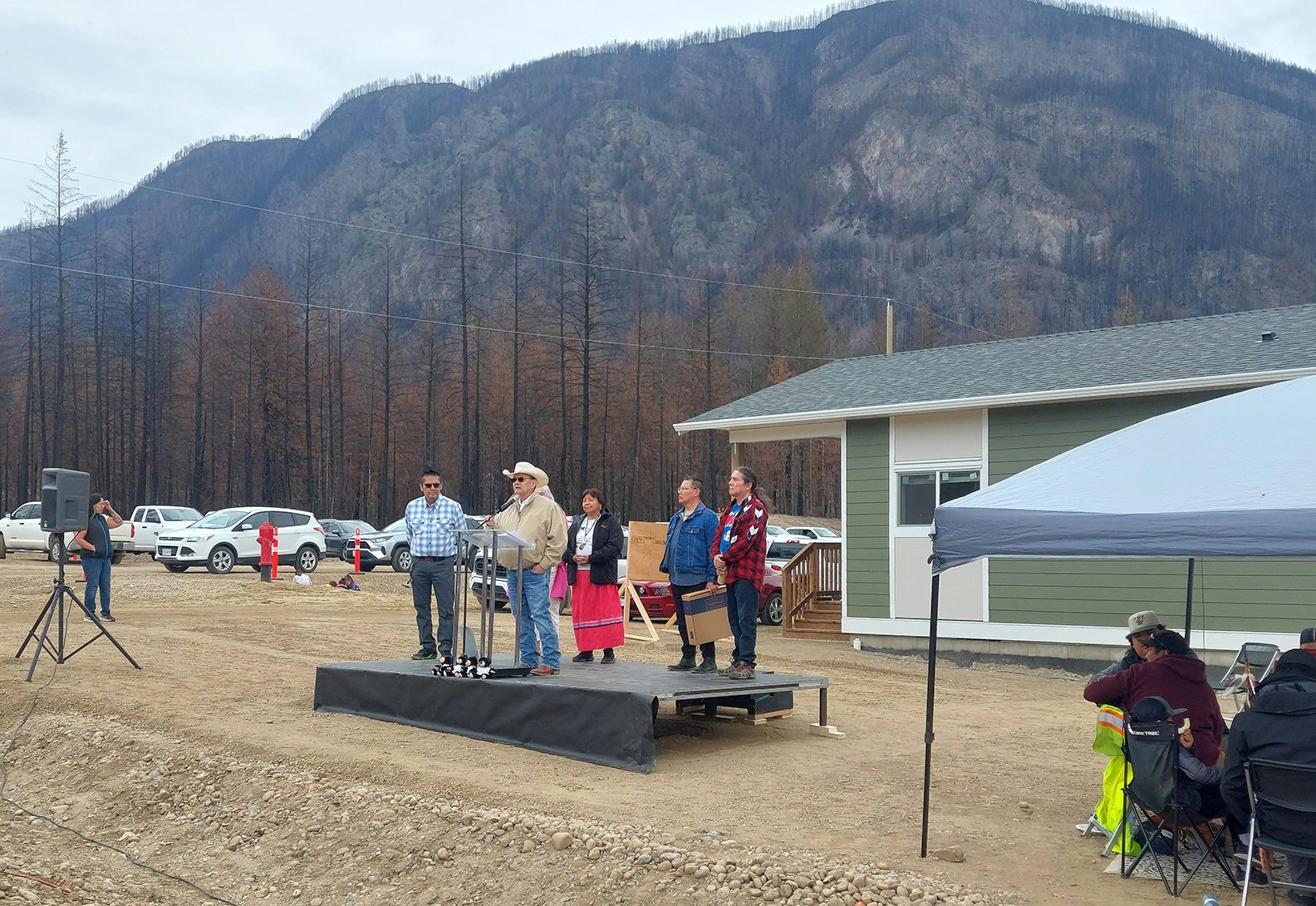Skwlāx te Secwepemcúl̓ecw Welcomes Members Home
By Jo Anne Malpass
Indigenous Services Minister Patty Hadju and Kukpi7 Jamie Tomma cut the ribbon on the fully-serviced Dancing Fawn II subdivision. (Scoop photos)
Members of the Skwlāx te Secwepemcúl̓ecw band held a welcome home ceremony April 24, eight months after seeing their homes destroyed by the Bush Creek East wildfire, to celebrate a significant achievement in their rebuilding process.
Members of the band were joined by visiting dignitaries including Federal Indigenous Services Minister Patty Hajdu, for the unveiling of the “Dancing Fawn II” subdivision, which already had roads, water, sewer, power and 8 of 11 homes already on site. Four subdivisions are being built simultaneously to replace the 34 homes lost in the wildfire, with homes going up already in the other three as well.
Rocky Tomma said ceremony is a very important part of their culture. Dignitaries included Kukpi7’s from neighboring bands: Adams Lake (Lynn Kanoras-Duckchief), and Neskonlith (Ivan Wai) and various politicians. The ceremony included a Skwlax elder, Wilfred Tomma, “our elders are not sure if they will be here to see our land back to the beauty it once was,” and one of the youngest band members, who will see the land come back.
Wes Francois, who recently stepped down from Band council, led the core rebuild team for the estimated $35 million project, funded by the federal government and Skwlāx band. “We’re celebrating the rebirth of these homes, but we lost more than that. Graveyards, maintenance yards, band offices, portions of our ecdev like the golf course, the gas station. In my mind, they are materialistic but at the same time our community, our band, our nation was looked upon as a progressive, proactive economic development entity, and we took a blow to that. This is just another bump in the road, and we will rebuild, we will come back, we will overcome.”
Kukpi7 James Tomma recalled the evening of the wildfire. When the fire came, he told his wife to leave and watched her leave through the flames. “I didn’t know if she made it.” Kúkpi7 and his brothers, Ron and Rocky tried to make a stand, but it wasn’t to be. “The fire people, they were dancing that day, announced by the wind people. They weren’t going to be denied that day.” “When we got to the river, the fire had already leaped over us and went across the other side of little river and went up the Skwlax Mountain and everything was just roaring, explosions, embers falling. Me and my brothers, we looked at each other and said, this might be it.” They were rescued by some brave boys from Adams Lake who came up by boat. “The whole countryside was going up; I can’t describe how I felt at that time.”
Seeing Dancing Fawn II being rebuilt took a lot of weight off his shoulders and made him smile for the first time in a long time. “As Kukpi7, until the last band member can open a door and close it behind him and say I’m home, then I can build mine.” He thanked members of his and neighbouring bands, “our community neighbours, staff members and the Federal Government for assisting us during this crisis.”
“Last year was the most devastating wildfire season on record, and the members of Skwlāx te Secwepemcúl̓ecw experienced it firsthand,” said Minister Hajdu. “Thanks to the incredible work by their leaders, and because of their strength and determination, they will soon be able to return to the community. I want to assure you that Indigenous Services Canada will be there as a true partner every step of the way.”
Construction of the subdivision, design support and construction management services have all been provided by Skwlāx Resource Management (SRM), a 100% Skwlāx te Secwepemcúl̓ecw owned company which maintains at least 50% Indigenous employment and 30% local band member employment.
Trevor Delorey, SRM’s Management CEO said SRM started with a team of three in 2021. “Skwlāx te Secwepemcúl̓ecw leadership’s consistent support enabled us to grow into an organization of over 60, “Delorey adds. “We hope the progress we have achieved so far in rebuilding the community provides some hope on your healing journey.” “Your support of this initiative will likely result in 50 to 60% of every dollar spent on Skwlax recovery to this stage going through band-owned and band member owned businesses in a timeline that is unprecedented for recovery almost anywhere,” he added. “This is what collaboration looks like, this is what capacity building looks like, this is what reconciliation looks like.”
Neskonlith Kúkpi7 Ivan Wai presented Kúkpi7 Tomma with a welcome home gift from his community.
One of two showhomes toured by invited guests.




